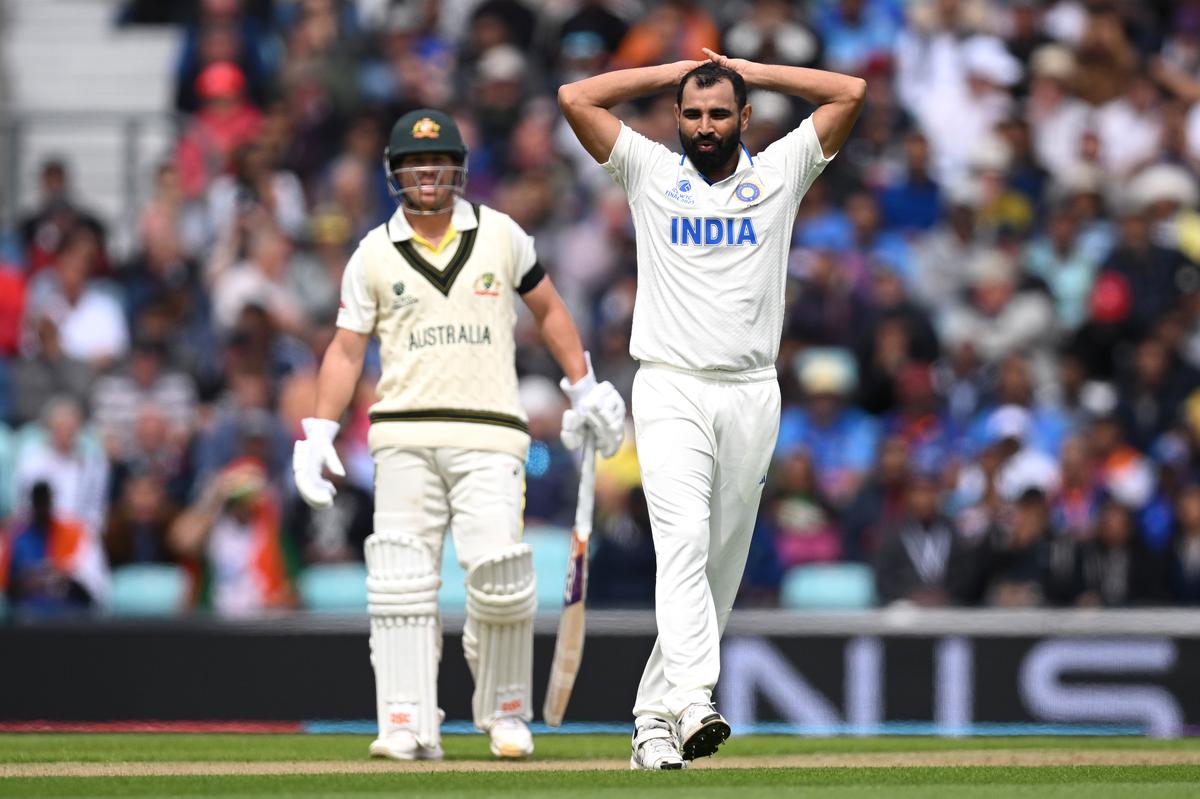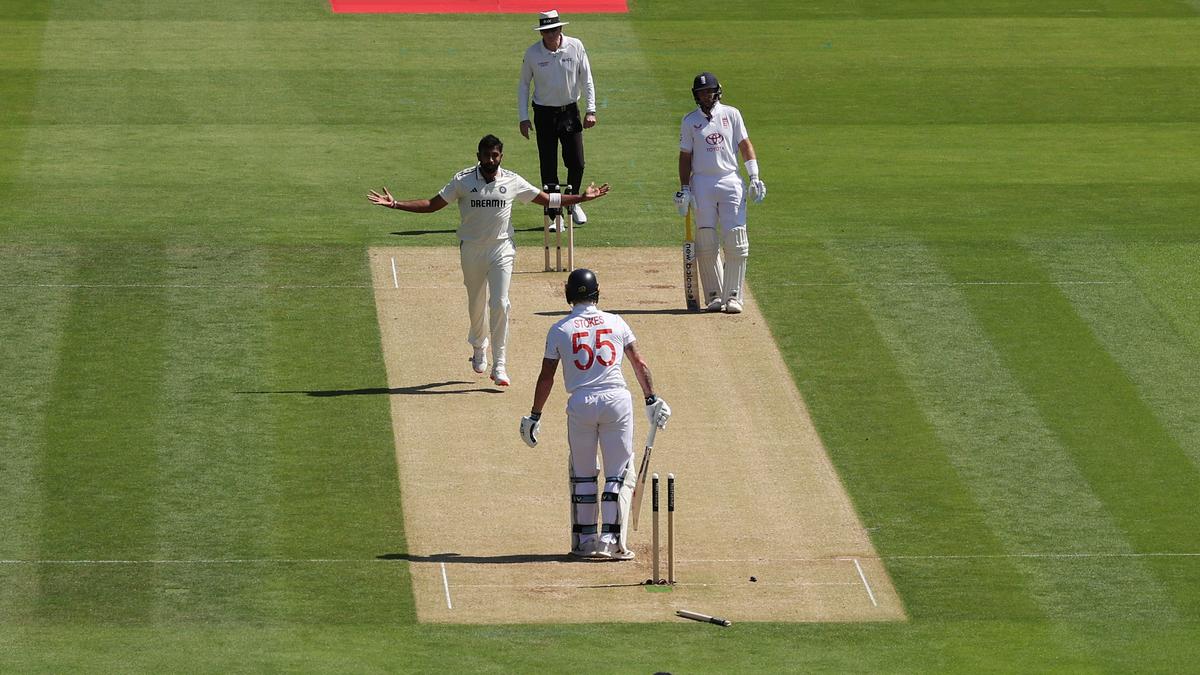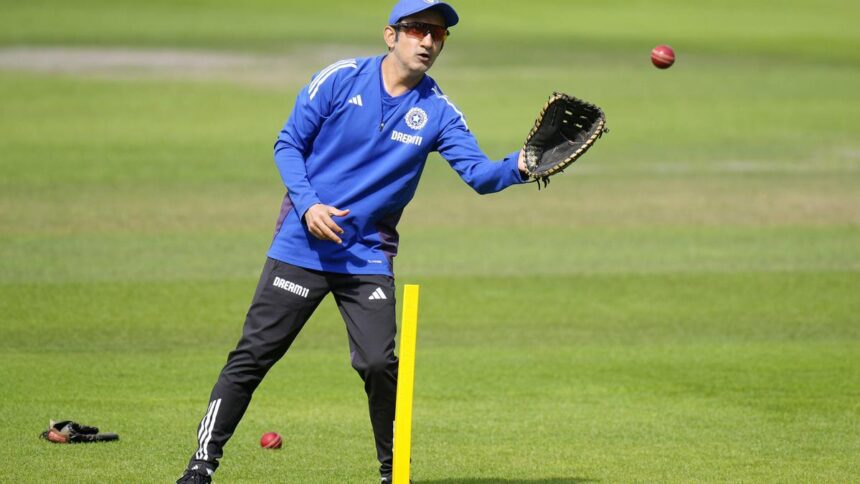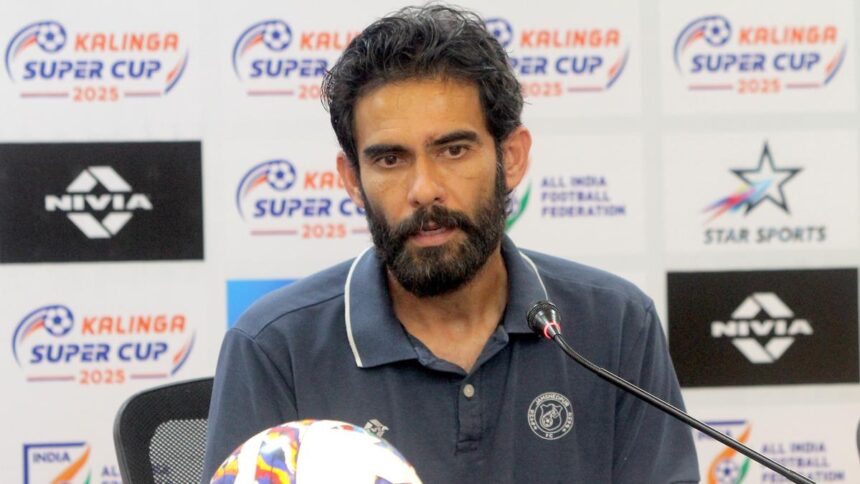“It takes 20 wickets to win Test matches,” is an oft-repeated dictum pertaining to cricket’s oldest format.
It is a statement that serves to underline the importance of bowlers in the five-day version. But when both teams take 20 wickets each, as England and India did in a humdinger at Lord’s, there has to be a winner and a loser. At the famous venue in London, England won and India lost.
Stepping up
Among the many aspects that will hurt Shubman Gill’s men about the heartbreak in the final session of the final day, it is this that should rankle the most. The fact that the Indian bowlers stepped up to take 20 wickets, bundling England out for just 192 in its second innings, and yet went down by 22 runs to trail 1-2 in the series.
The bowling display was a classic case of an attack being more than the sum of its parts. Each of the six bowlers, including batting all-rounder Nitish Kumar, returned at least a wicket. And they restricted England’s run-rate, usually above four per over in the Bazball era, to 3.44 and 3.08 in the first and second innings respectively. Although the two-paced nature of the Lord’s pitch contributed, there was really no let-up in pressure from both ends.
Jasprit Bumrah, the mesmerising master of modern-day fast-bowling, led the way. Discounting the oddity that India has lost both Tests he has played in this series, he has lived up to his billing as he invariably does.
His 12 scalps in just two appearances, one behind Mohammed Siraj (13 in three) in the list of highest wicket-takers, already include two five-fors. Despite being confronted with largely benign surfaces — a stark departure from India’s previous tours of the Old Blighty — and Dukes balls that have gone soft and out of shape after the first 25-30 overs, the pace spearhead has consistently posed a wicket-taking threat.
ALSO READ | Tactical twist: batting first and slow does the trick for England at Lord’s
Bumrah’s sui generis bowling action, the hyperextension of the right arm, the braced front leg and the release point — closer to the batter than the norm — tend to be attributed often as key factors for his brilliance. But perhaps not emphasised as much is his sheer skill and consistency: he is relentlessly accurate in nailing the right lengths and delivers with a perfectly canted seam owing to an impeccable wrist position that enables him to swing the ball either way in suitable surroundings.
As peerless as Bumrah is, however, there is no getting away from the reality that the 31-year-old is not going to be available for every Test, given his history of back injuries. He will only play one of the remaining two Tests in this series.
With that known, it is all the more significant that Siraj and Akash Deep have pulled their weight in the last two Tests. Particularly at Edgbaston, with Bumrah resting after the hard grind at Headingley, they were heroic, sharing 17 wickets between them in a 336-run victory. Siraj silenced his detractors with figures of six for 70 in the first essay. Akash had his moment of recognition in the final innings, snaring six for a 10-wicket match-haul.
Curious record
Siraj’s performance at Edgbaston drew attention to a rather curious record: in 24 Tests with Bumrah, he has taken 73 wickets at an average of 33.56. In 15 Tests without his senior teammate, he has claimed 40 scalps at 26. Apart from Siraj perhaps not getting his preferred end to bowl from while playing with Bumrah, this may just be a peculiar statistic that shouldn’t be read into for definitive conclusions. What can be said with some assertiveness is simply that Siraj is a very good bowler. With or without Bumrah.

In tandem: Over the last two Tests, Akash Deep and Mohammed Siraj have shown they can play key roles in taking 20 opposition wickets, with or without Bumrah.
| Photo Credit:
Getty Images
Among the 31-year-old’s virtues are a nippy outswinger and a wobble-seam delivery that cuts back sharply into right-handers. That he has a fiercely competitive streak and operates at full intensity all day long without complaint help as well.
If one had to cast a critical gaze, a dash of inconsistency may be behind his merely satisfactory output of 113 wickets after 39 Tests at 30.88. But Siraj would argue that he hasn’t had the rub of the green in recent matches. At Lord’s alone, he witnessed K.L. Rahul drop Jamie Smith on five off his bowling and a close leg-before appeal against Joe Root turned down.
ALSO READ | For Archer, pace is ace
Beyond Bumrah and Siraj, though, there seems to be a slight drop-off in quality in Indian cricket’s pace cupboard. Though Akash put all his experience of toiling away on unresponsive pitches in First Class cricket to good use at Edgbaston, it remains to be seen whether the 28-year-old can handle the onerous exertions of Test cricket. He did hobble off the field in the second innings at Lord’s and didn’t bowl again.
In style and approach, Akash is perhaps the closest among the newer crop of fast men to Mohammed Shami. Besides playing for Bengal in the domestic circuit, they gallop to the crease, extract seam movement and generally hit a length that keeps the stumps in play.

Unclear future: In peak shape, Mohammed Shami is a boost to any bowling attack. But the decision makers have doubts about his durability in the longest format.
| Photo Credit:
Getty Images
Which brings us to Shami himself. Soon to turn 35, he made his ODI comeback against England in February after recovering from an ankle surgery and knee trouble, and starred in the victorious Champions Trophy campaign in Dubai. But his appearances in whites stand at 64, having last featured in the 2023 World Test Championship final against Australia. In peak shape, Shami is a boost to any bowling attack, but persistent injury concerns, as chief selector Ajit Agarkar said when the squad was picked, led to doubts about his durability to last five Tests.
With Shami obviously not getting any younger, his Test future may depend on how the likes of Prasidh Krishna, Arshdeep Singh and Harshit Rana fare. If they are able to impress over the next year or so, the veteran could find the door shut. So far, though, Prasidh and Harshit haven’t made a very strong case, and Arshdeep remains untested with the red cherry.
History’s lesson
The importance of the supporting cast finding its feet at the highest level cannot be overstated, for a robust, well-rounded pace attack is a must for India to thrive in all conditions. A glance at recent history is instructive. In Virat Kohli’s tenure as skipper, India competed regularly away from home only because Bumrah, Shami, Ishant Sharma and Umesh Yadav found their bearings at the same time. When India last won a Test series in England in 2007 under Rahul Dravid’s captaincy, Zaheer Khan, R.P. Singh and S. Sreesanth were a trio at the top of their game.
There is no magic potion, of course, to expedite the progress of the young pacers, but that is a discussion for the think-tank at a slightly later date. With Bumrah and Siraj leading the pack for now, Gill will just want his bowlers to back up their good work at Lord’s and take 20 wickets in India’s next Test at Old Trafford. After all, it takes 20 wickets to win Test matches.
Published – July 19, 2025 12:00 am IST





















